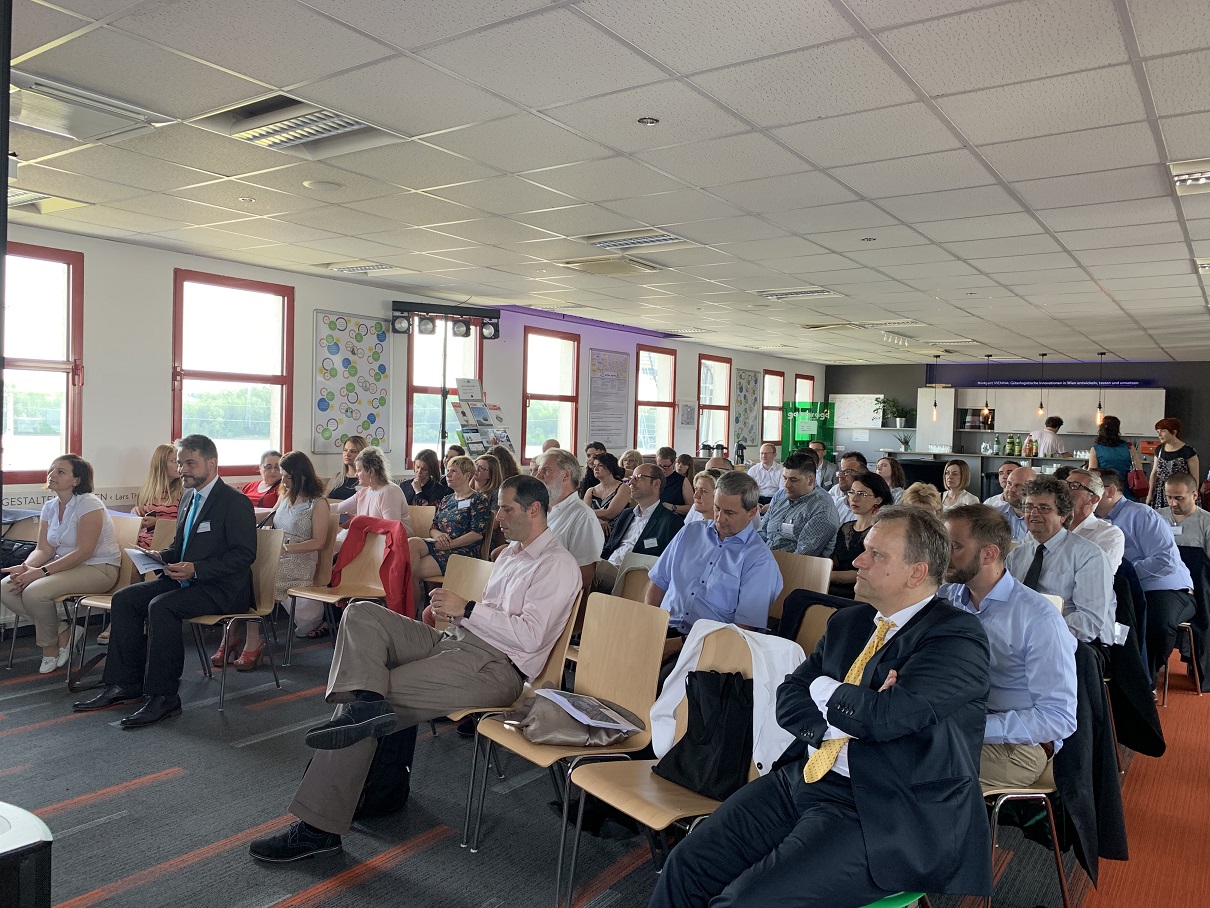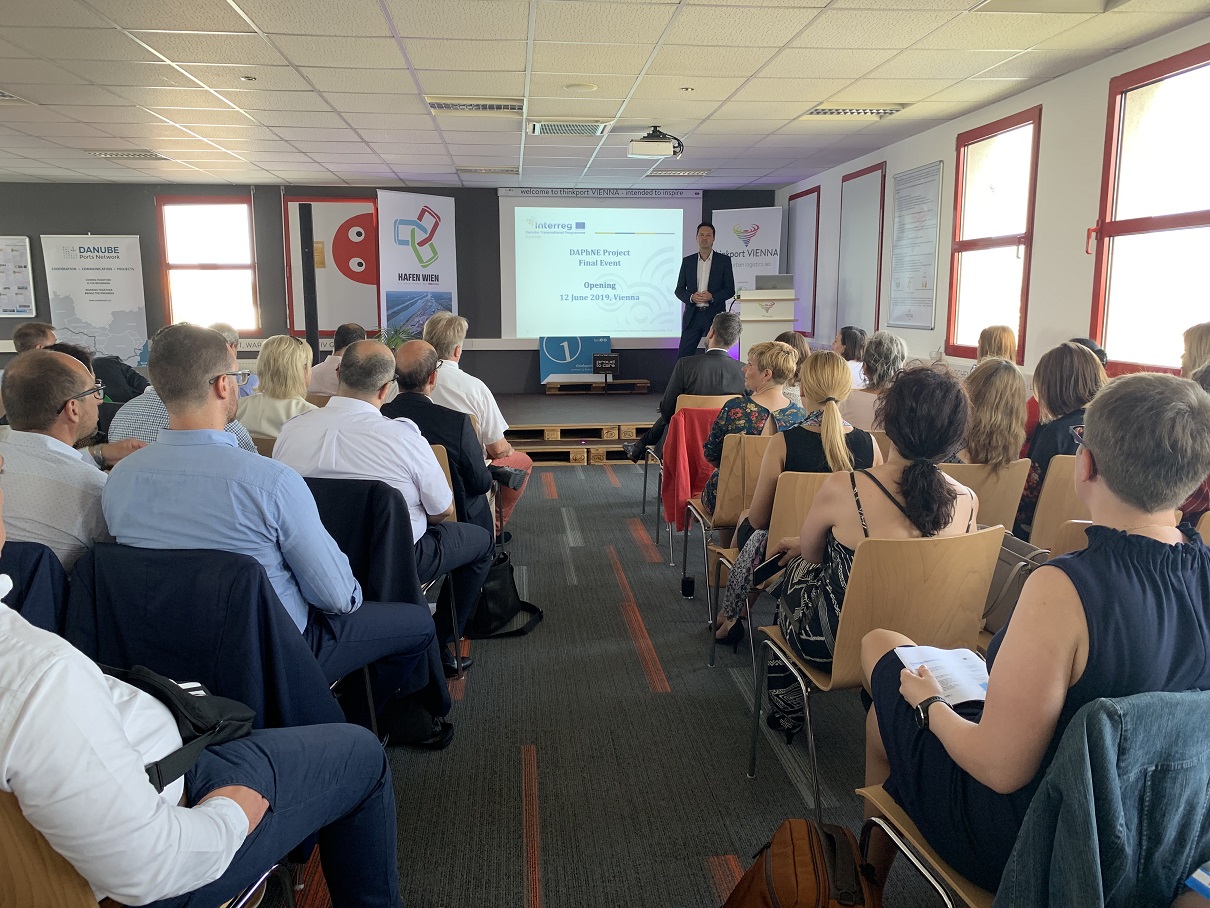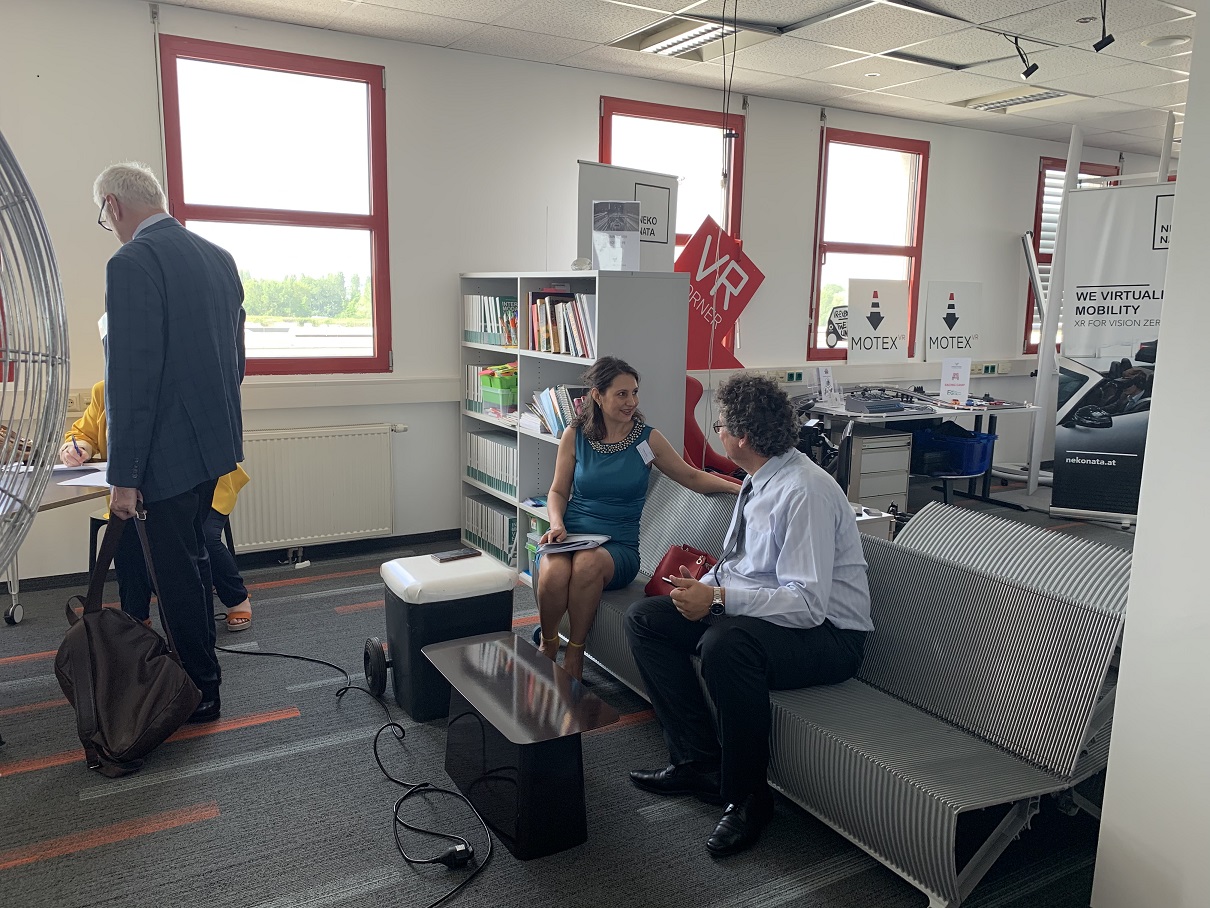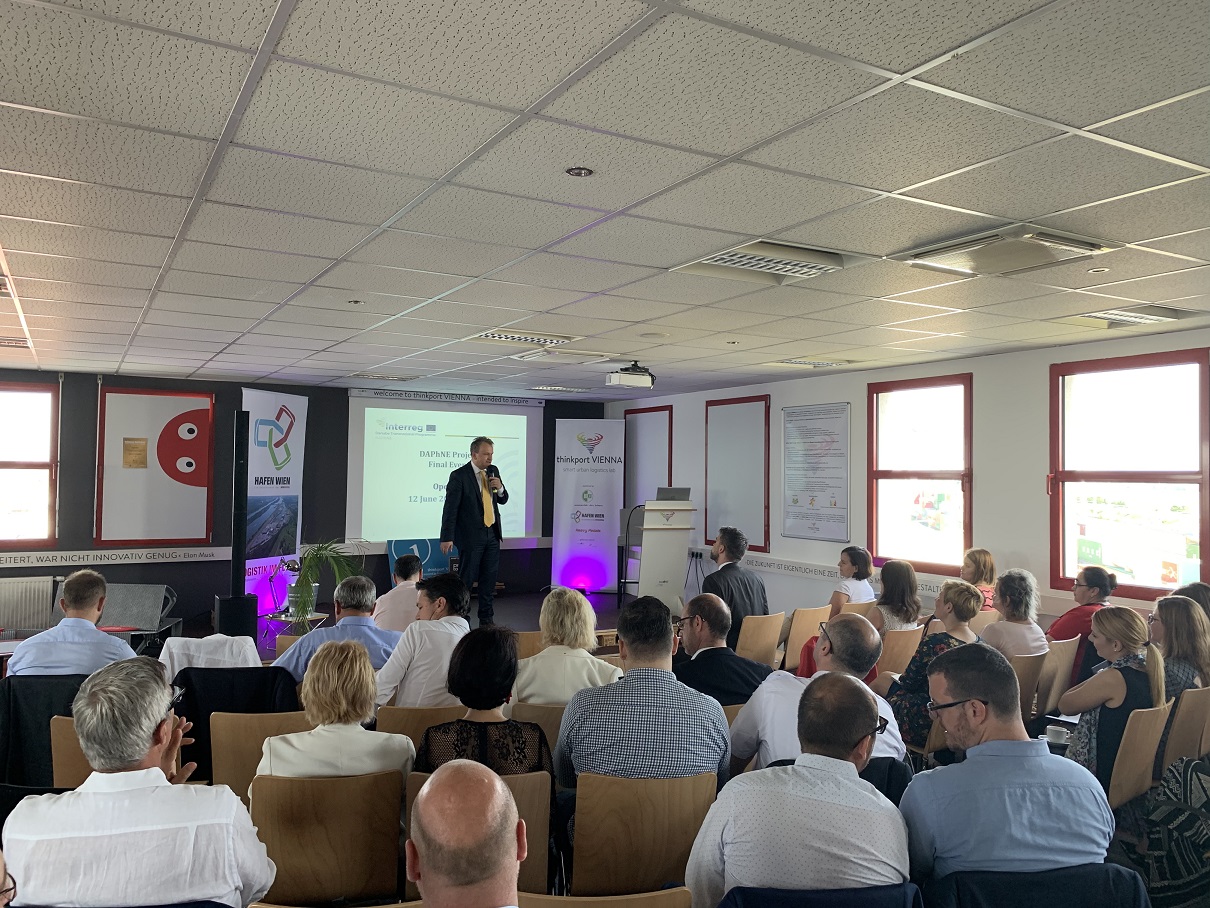DAPhNE - Last milestones achieved: Steering Committee Meeting and Final Event took place in Vienna on 12 June
25-06-2019
After 30 months of intense work, the DAPhNE consortium met for the last time on 12 June 2019 at thinkport Vienna during the DAPhNE Steering Committee Meeting and Project Final Public Event to share the most important success stories achieved during the project implementation period. The event brought together 60 participants (industry representatives, port authorities, NGOs, universities) interested to debate and discuss on Danube ports development opportunities. Important progress has been recorded and disseminated in the context of all content-related project activities which touch on topics such as port legislation & funding, port administration & management, port development as well as port strategy & port network formation.


Ms Ruxandra Florescu in her position as Project Manager of the DAPhNE project introduced the main achievements of the DAPhNE consortium corresponding to the 7 main action areas: fragmented legislation, inefficient port administration processes and procedures, lack of eco-efficient port business strategies, shortcomings in the use of public funding, insufficient/deteriorated infrastructure, lack of qualified personnel, limited use of new technologies. Among the results emphasised are: series of national workshops on topics like capacity building and HR development, legal framework and port funding opportunities, international workshops on port management modes and port processes, high visibility events - Port Policy Days and Port Info Days, guidelines for industrial development in ports, public-private partnership models for Danube ports, innovation trends and new market opportunities, Port Community System application developed and tested in 4 ports, Danube Ports SWOT analysis, Strategy and Action Plan and Danube Ports Network (DPN) setup and enlargement. For details you may refer to the attached presentation.
Ms Monika Thury from the Hungarian Federation of Danube Ports responsible for conducting the overall project communication and dissemination activities presented a summary of all activities meant to promote the project and its results to the wider audience. All these perfectly coordinated activities can be found described in the attached presentation.
Mr Oliver Schauer from the University of Upper Austria talked about the importance of developing the human factor, as skilled and motivated work force contributes greatly to the overall productivity of ports. The study conducted in the framework of the DAPhNE project shows that the majority of the employees in Danube inland ports are male and have a school leaving qualification. The majority of port employees employed by port authorities participating in the study are older than 36 years entailing the risk of shortage of staff in inland ports in the next decades due to the retirement of current employees. In the future, experts from the inland port sector expect a balance in terms of gender in inland ports. Results show that in the future further training measures are required by inland ports. In addition, measures to promote inland ports as an attractive work place to young people and women are required. Details can be found in the attached presentation.


Ms Denitsa Mateva representing the Bulgarian Ports Infrastructure Company touched upon topics dealing with improving and harmonizing port administration processes and port management models. The conclusion was that there is no general solution applicable to every inland port because ports have different background conditions. However, the project partners dealing with these subject have identified and recommended some good practices which can improve port operations / port management models Among few examples worth mentioning are the smartPORT concept from Hanburg, the model of thinkport in the Port of Vienna, the successful concession example from Bulgaria or the management model applied by smaller, private-owner ports from Paks (HU). More details on the above mentioned and further recommended port management models and guidelines for implementation can be found in the report Recommendations for port management as well as in the attached presentation.
Mr Werner Auer (Port of Enns) and Ms Natasa Osrecki (RGO Communications) reported on their experience of dealing with a modular Port Community System application from the side of a port having implemented it and from the side of the software developer, respectively. A modular Port Community System was implemented within the framework of Activity 5.3 of the DAPhNE project and 3 modules (core module - user management & data layer, cargo, tracking and tracing) have been developed and were tested within the foreseen pilot action. For the participating Danube ports (Enns, Bratislava, Novi Sad and Smederevo), this provided a first-hands experience towards digitalisation and an affordable alternative to commercial Port Community Systems, normally designed for large maritime ports. The pilot action has started in October 2018 and lasted until March 2019. Details on the their findings as well as an insight on the lessons learnt can be found the present presentation.
Mr Sasa Jovanovic (iC Consulenten) introduced the “crown” of the entire project, the Danube Ports Development Strategy and Action. This Strategy, covering the period of 8 years (2020-2027) is divided into an analytical part and a part containing individual strategic objectives and implementation measures for each objective. The SWOT analysis of the Danube region port industry, being an analytical part of the Strategy, was performed using a triple layer – that of individual ports participating in the analysis, national port industries and an entire Danube region port industry. A total of 21 ports in the Danube region were subject to the SWOT analysis. Based on these 21 SWOT analyses, country wide SWOT analyses of port industries in Austria, Slovakia, Hungary, Croatia, Serbia, Romania and Bulgaria were elaborated, reflecting the current situation f the respective port industries, taking into account the internal strengths and weaknesses and external threats and opportunities. From the Strategy’s point of view, it is very important to avoid comparing the Danube ports with the Rhine ports. Most of the accessible development strategies of EU inland ports are based on the challenges, issues, trade patterns and transportation geography of inland ports of the Western Europe and focus mostly on container traffic to/from main gateway ports in the North Sea. Since The Strategy itself will be used in the updates of the national and individual port strategies as an inventory of objectives and measures applicable in all ports as per their own needs. Moreover, it will be a source of ideas for the future project pipeline of the Danube Ports Network. Details can be found in the attached presentation.
Ms Janeta Toma representing the Danube Ports Network Technical Secretariat and Ms Lucia Karpatyova from Pro Danube Management talked about the upcoming activities to be organised in the framework of the DPN (www.danubeports.eu) and about potential project applications in the field of digitalisation. For details, please refer to the presentation of Ms Toma and the presentation of Ms Karpatyova.
Mr Manfred Seitz as overall Project Coordinator congratulated the DAPhNE consortium for their excellent work and mentioned that DAPhNE project created a strong basis, knowledge wise and contact wise, which will continue to foster highly appreciated projects and initiatives for the IWT sector with the dedicated support of DPN (Danube Ports Network).
